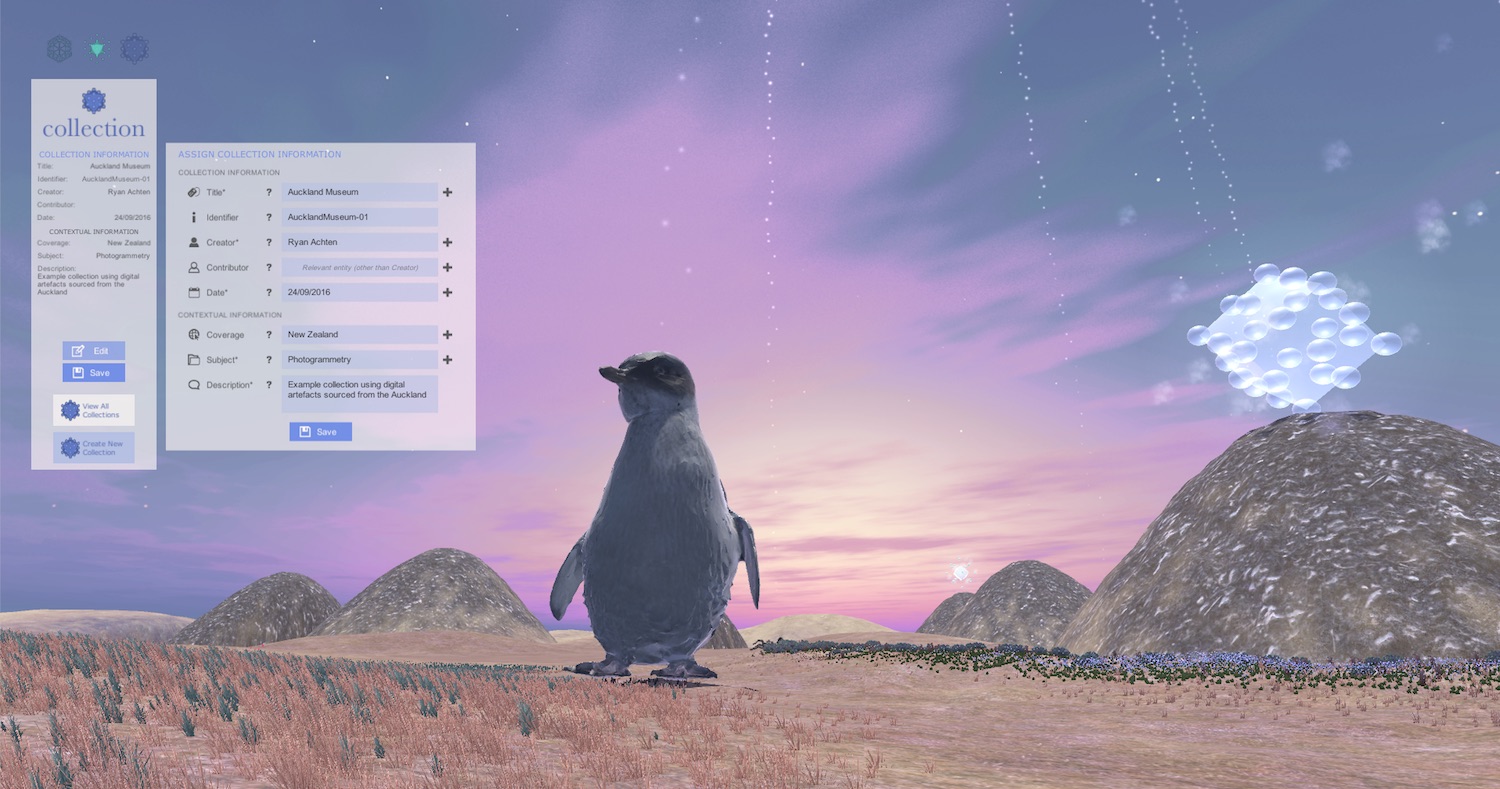Whether you’re seeking textual information, images, or videos; accessing digitally archived information traditionally takes place in a two-dimensional space. Since these types of media are comprised of two dimensions, this paradigm is idea. However, to apply the same approach to representing digital three-dimensional artefacts would preclude interfaces from leveraging opportunities this third dimension makes available
Interacting with archived digital 3D media isn’t an entirely new concept; there are a number of well established precedents which inspired our resulting approach in various ways. None of these case studies, however, suitably catered for the needs of the Vertice project – resulting in the development of our own novel approaches to 3D archive interaction
Sketchfab is 3D model viewer host popular amongst 3D content creators, as well as a few forward-thinking cultural institutions (such as the British Museum). Sketchfab’s purpose differs from Vertice in that it expressly allows for viewing singular 3D models at once, and does not facilitate archival functionality such as browsing and artefactual metadata
ScanView is rendering system developed by Stanford University for viewing high resolution 3D media. ScanView’s client/server rendering system protects 3D content from potential hacking by only serving 2D renders of the user’s current perspective instead of the entire 3D model. Similar to SktechFab, the purpose of this system differs from that of Vertice by prioritising the viewing of singular models without accounting for how the treatment of a 3D environment might aid in communicating and interacting with artefactual information
An important precedent to this project is the Smithsonian X 3D Explorer; a repository for various enquiries into 3D cultural media conducted by Smithsonian researchers, curators, educators, and digitisation office. Smithsonian provided due inspiration into how 3D space may aid in the contextualisation of artefacts and communication of information through their use of virtual tours. Again the purpose of this project differs from Vertice, since it limits its content to media produced internally, without enabling software downloads or public contribution
Moving from a 2D browsing model into a 3D counterpart presents a number of challenges and opportunities for archive interaction design.
A 3D digital artefact is comprised of a combination of 2D information (albedo texture, UV maps, normal maps etc), and 3D information (polygon mesh); necessitating a larger amount of data to be served to the user when browsing 3D archives. Consequently, fewer number of artefacts can be displayed to the user at one time without compromising software user experience.
Differences in media spatiality also prevent existing 2D archive browsing models from being mapped effectively to the Vertice interaction paradigm. Widely adopted models, such as image grids commonly featured in digital collections, lean upon representing 2D content, which would neglect interaction opportunities within a 3D context.
Instead, new models for exploring 3D digital archive content were devised during Vertice’s development. Vertice allows users to browse various metadata attributes and return relevant artefacts within a three-dimensional environment. The WASD computer game standard was adopted to allow simple navigation through the 3D environment. Since this is widely used in computer games we look to reduce novice user learning curves whilst providing a novel form of archive interaction. Upon reaching an artefact, Vertice uses raycasting techniques to display users with contextual information about the artefact.
Vertice has currently been constructed for standalone (for Windows, OS X, and Linux machines) and WebGL deployment and has the potential to be reconfigured for use through an array of platforms. Built using the gaming engine, Unity 3D, Vertice could be deployed for engagement in augmented or virtual realities, and even common gaming consoles such as PlayStation or XBox; opening up numerous opportunities for novel forms of archive interaction

Owing to the variety of use cases in this field, there is no obvious standard for modelling the metadata associated with digitised artefacts. As such, the Vertice metadata model draws inspiration from a number of relevant projects and initiatives
WebGL is an open-source graphics library that is capable of rendering complex 3D environments in a web browser without the use of plug-ins or proprietary technology. The Vertice viewer is implemented in WebGL, and can be run in any contemporary web browser, and embedded within any modern website.
Hyperlinking is fundamental to the World Wide Web, allowing any resource to link to another resource of interest. Vertice is designed with this principle in mind, and envisions information seekers engaging with artefacts in its 3D environment, and following links from within that environment to other resources of interest (the catalogue, a downloadable 3D model, an artist’s website).
There are a plethora of exciting technologies on the horizon that will likely change the way that information seekers expect to engage with cultural artefacts: it is conceivable that augmented reality, virtual reality, and 3D printing will all provide opportunities for new modes of discovery. Vertice has been focused on establishing a sound desktop experience, but its functionality could be extended to incorporate these new technologies.